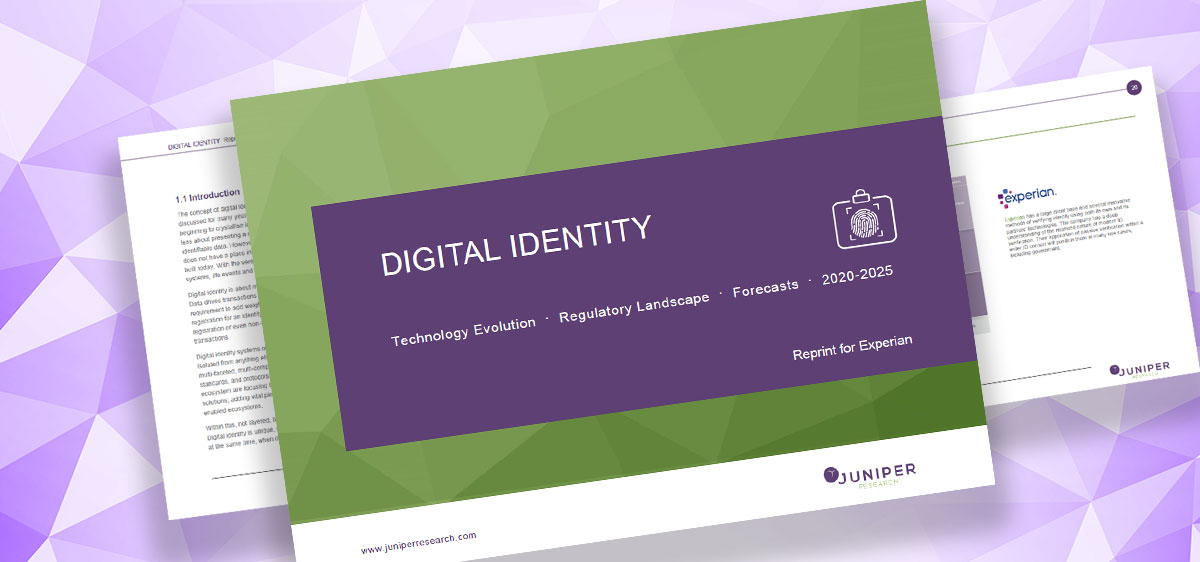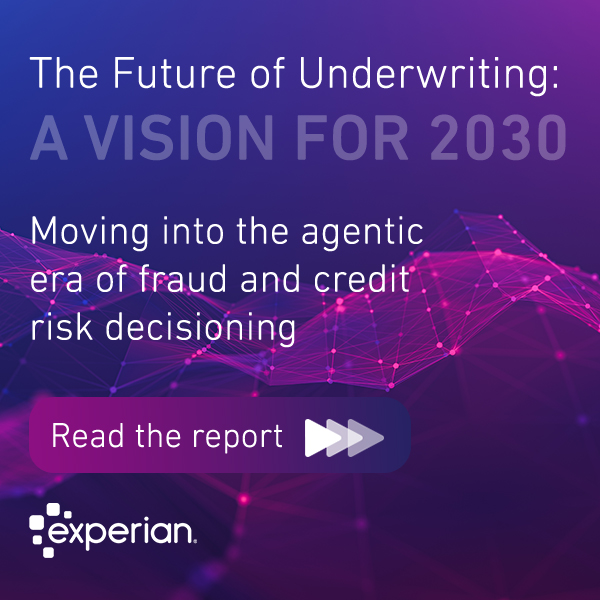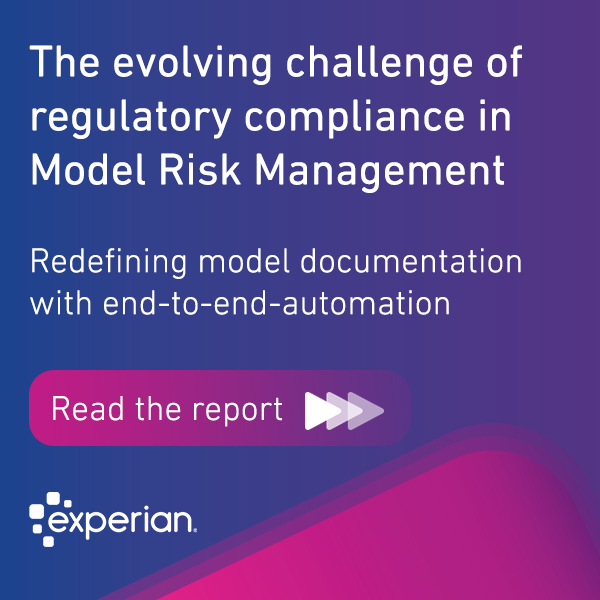Search Results for: ai

As the demand for digital exploded over the past year, companies responded in kind. Those who were prepared rapidly scaled their digital capabilities to accommodate the sudden influx of customers. And those who were caught off guard? Many found themselves scrambling to meet the moment. For both parties, the result has been an accelerated digital transformation that's benefiting businesses and customers alike. The focus has been primarily on improving the front-facing customer experience. But as we look ahead, the dramatic shift toward digital has also opened up opportunities to enhance the security and authentication experience too. By weaving authentication into the customer micro journey—the subsets of tasks that comprise the customer journey—we can strengthen security and decrease fraud. And the data collected along the way creates wholly new opportunities for personalization that improve the experience that much more. A brittle solution The most common authentication approach requires customers to create usernames and passwords and provide personal information to verify their identities. Customers increasingly expect that companies will require them to provide this personal information to secure their accounts. In fact, in a recent Experian survey, 45% of customers said they'd be willing to share more personal data with companies. However, as long as passwords serve as the primary security tool, the approach remains vulnerable. First, it's unlikely that companies would (or should) continuously ask customers to provide passwords and verify their identity at various stages in the customer journey. This means that there's one big gate for fraudsters to scale and limited hurdles once they've gained access to an account. Certainly, passwords are unique to an individual, which is a positive. But they're also brittle, so they're easily broken or compromised. They don't flex with the user or the customer experience, nor do they offer security beyond a specific juncture. As we look to improve the customer experience continuously, we also need to provide end-to-end authentication. Doing so ensures you can recognize customers at every point of their journey, whether they're logging in or checking out. Securing the micro journey An end-to-end approach requires an understanding of customer micro journeys. It's not enough to provide a great digital experience, say via your account onboarding, but then have a completely different experience when a customer needs access to payment support. Considering micro journeys allows you to dive deeper into each component of the consumer lifecycle, and to understand the nuanced interactions that occur within each of those stages. Rather than just focusing on general approaches across Onboarding, Login Access, Transactions, etc., each one of these stages can be broken into smaller discrete steps (micro journeys), where opportunities exist to simultaneously delight the customer, and to create a much more nuanced risk management strategy. Then you can ensure that each task is seamless, easy, and personalized to the individual. Such a strategy can create deep and lasting customer loyalty. And identification remains a crucial part of every micro journey. No one likes to be at a party and have the host ask them their name repeatedly. The concept applies to security as well. Passive or invisible approaches to authentication eliminate this friction. For example, companies can continually authenticate the customer by employing physical or behavioral biometrics as they progress through the journey. The technology considers: How does the customer hold their device? What time are they usually active? How much pressure do they apply to the screen? Such data paints a much more nuanced picture of an individual—and one that's exceptionally hard to impersonate. And while privacy concerns arise, the type of data required to authenticate customers in this way is far less intrusive than asking for personal information. Customers are increasingly amenable as well. In our research, consumers cited physical biometrics, OTP, and behavioral biometrics as their preferred authentication methods. Passwords didn't even make the top 5. A holistic approach We're at a point in which forward-looking companies can rethink the complicated security dance they've been asking customers to do and move toward a more passive approach. It's an evolution that doesn't just improve the security experience; it also opens up massive opportunities for increased personalization. The data gathered across these micro journeys enables you to design experiences that truly meet customers' individual needs. That capability can become a significant differentiator and driver of growth. Getting there, however, requires a holistic view of your customer experience—one that includes security as a critical element. Our past three research waves show organizations are starting to deprioritize fraud prevention in favor of customer care and online offerings. This is a concerning trend: companies cannot forgo one for the other. Instead, organizations will need to consider both security and customer experience and creatively explore how to bring them together. It's a long-term strategy for customer retention and growth, one that requires a deep understanding of your audience as well as the solutions needed to enable passive authentication. For organizations, the journey toward passive authentication as part of the customer experience is more of a marathon than a sprint. But by focusing now on melding recognition and the customer experience together, organizations can ensure they're ready to deliver high-quality, less intrusive, and more secure experiences that customers are beginning to demand. Related stories: The evolution of digital identities What your customers say about opening new accounts online during Covid-19 and impacts on how you handle customer authentication 2021 Predictions: Consumer demand for digital will persist and the customer journey will be redefined

Did you miss these February business headlines? We’ve compiled the top global news stories that you need to stay in-the-know on the latest hot topics and insights from our experts. Experian launches new anti-fraud platform for digitally accelerated world Financial IT covers the latest on tools to help businesses safely meet the rapid increase in demand for digital services and online accounts. Eduardo Castro, Head of Identity & Fraud, speaks to gaining confidence in preventing fraud while meeting these new business challenges. Experian helps Atlas Credit double approval rates while reducing credit losses by up to 20 percent This Global FinTech Series article provides insights on efforts to make the power of artificial intelligence accessible for lenders of all sizes. Shri Santhanam, Executive Vice President and General Manager of Global Analytics and AI, shares background on constantly-changing economic conditions impacting credit models and how to rapidly develop and deploy models to keep up. 60 percent of consumers are using a universal mobile wallet New research shows a continuing trend toward digital transactions and mobile wallet payments. Steve Wagner, Global Managing Director of Decision Analytics, speaks to consumer and business insights on the increased demand and what businesses need to consider to ensure positive customer journeys that support these shifts. Why digital identity and the customer journey is crucial for today’s businesses Steve Pulley, Managing Director of Data Analytics, explores business opportunities stemming from the massive increase in consumers accessing services online. Taking the right steps not only helps ensure business survival but sustainable success. The key is fundamentals including the customer journey and digital identity. How modern data strategies underpin the digital identity and authentication practices critical to digital transformation In this Datanami article covering our progression toward a 'contactless world,' modern fraud prevention is explored. Dealing with a tremendous amount of data to offer security, while bearing in mind customer convenience, requires sophisticated technology. Holistic approaches both improve operations and helps keep pace with fraudsters to protect customers. Stay in the know with our latest insights:

If the past year revealed the rising demand for everything digital—it also highlighted key aspects of the online customer journey that organizations have neglected. Until now, most companies have prioritized their digital investments around the revenue-generating aspects of the customer experience. Online account onboarding, e-commerce, and credit lending are prime examples. However, when consumers require different outcomes such as payment support, the interactions are often still handled by call centers. We saw the consequences of this play out during the pandemic. As stay-at-home orders left call centers closed or understaffed, customers who needed help found themselves spending hours on the phone—or worse, were left without guidance. This digital disconnect may be common, but hopefully not for long. Forward-looking companies are creating end-to-end digital customer experiences that benefit customers and the business. From improved customer LTV (Life Time Value) to cost savings, the results reveal that prioritizing customers at every turn pays. The future of digital experiences revealed The last year yielded many insights into how, why, and when customers engage with a business digitally. Faced with few options, customers turned to online resources in droves. And unlike years past, when younger generations have driven digital adoption, the crisis forced customers of all ages to engage with businesses online. Around the world, companies rose to the challenge. According to Experian research, nine out of 10 businesses currently have a strategy for serving their digital customers, with 47% implementing their strategies since Covid-19 began. The rapid shift to digital uncovered opportunities to reach new markets. For example, online grocer Instacart™ launched support services specifically for seniors interested in grocery delivery. However, the sudden spike in consumer demand for engaging with businesses online also revealed significant gaps in the digital customer journey. Consider that only one in four consumers report that they can get help when they need it from a customer representative while online. We saw this play out in real-time after a global bank reached out because it needed a digital solution for payment support. The company had traditionally routed customers to a call center for help. But during the crisis, it was overwhelmed by demand. While working with this bank on a self-serve solution that enabled customers to address their payment concerns online, the experience revealed something important about the future of digital experiences: Regardless of where they are in their journey, customers expect—and deserve—the same experience. True digital yields a true value Investing in a seamless digital customer journey is a long game, but it's one that can pay off exponentially. As we’ve seen, organizations have prioritized digital investment that brings in near-term revenue. These include mobile capabilities that increase customer conversions or personalized offerings that boost the average spend. And make no mistake, digital solutions that meet these needs are essential. But the customer who applies for a vacation loan may be the same one who later needs a payment holiday. Meeting these needs digitally, no matter what they are, engenders deep loyalty. Companies that support their customers during downtimes will gain customers for life and reap the benefits when those individuals are inevitably back on their feet again. The happy result is not only increased financial stability for customers but also improved advocacy scores and customer lifetime value. Additionally, an end-to-end digital customer experience can yield unexpected cost savings. For instance, an organization we recently worked with was spending an average of $35 per customer interaction. Their customers accessed customer service representatives via many independent channels, incurring costs each time they connected. We provided them with a multi-channel digital solution that reduced the cost to between $5 and $7 that allowed several interactions and provided consistent experience in the process. In the end, the company was able to deliver better service at a much lower cost point. From here to there The goal of building an end-to-end digital experience is a worthy one, and there are a few components of a forward-looking digital strategy that will help ensure success. First, companies need to create systems and cultures that allow them to respond to changing customer demands. No one predicted that a pandemic would rapidly accelerate our digital shift. But the companies improved their digital capabilities to meet the need came out ahead. Also, while customers experience the technology's front-end, orchestrating and supporting that journey across a range of consumer touchpoints driven by different events is equally as important. Implementing decisioning tools that leverage data across systems allows you to create advanced analytical models that predict customer behavior, potential problems, and more. Organizations can then make decisions in real-time to support customers and the business when they need help, be it a global pandemic or an environmental event. Lastly, taking advantage of emerging technologies can ensure your company keeps pace with the rapidly evolving expectations customers have for their digital experience. For example, AI-powered virtual assistants learn from every interaction and provide more personalized service than a standard chatbot that uses decision trees. These virtual assistants won't replace humans but leveraging them to augment customer experiences offers additional support to customers and creates continuity across the experience. The shift we've seen is about more than meeting the digital demand. At the core, it's about leveraging digital capabilities to see, understand and prioritize customers at all points of their journey. Then we can offer them proactive solutions that make their lives better and strengthen our businesses along the way. Related stories: New research available: Global Insights Report, February 2021 The role of the virtual assistant: Meet consumer demand for the digital experience Cloud-based decision management software is a must for re-imagining the customer journey

Since the Pandemic began consumers have been scammed more than ever before. From phishing emails, fake websites, and other scams intended to steal personal and financial information, to fake pharmaceutical goods or goods that never arrived, to account takeovers, multiple ways to defraud people have emerged or re-emerged at an alarming rate. It's an understatement to say that now more than ever customers need to be protected and it's the right time for businesses to improve some of their capabilities and offer their clients the secure experience that they expect. The results from our recent global research study of changing behaviors and priorities throughout the pandemic show us just how important online security has become for consumers: Half of the consumers surveyed say they are very/somewhat concerned about conducting activities online; with the concern being most significant in India (69%) 4-in-10 consumers express increased levels of concern about online activities since C-19. The level of concern about consumer online activities and transactions has increased significantly since C-19 in India (61%), Brazil (57%), Singapore (53%), and US (44%) – one-fifth of consumers in the US and Brazil say that their level of concern has increased significantly. 42% feel that they are more of a target for online fraud now than before COVID-19, while only 25% feel safer about sharing personal information now than they did before COVID19 The largest sources of concern among consumers are credit card information being stolen (36%), online privacy (34%), identity theft (33%), and phishing email (32%). Consumers in India, Singapore, the US, and Brazil show generally more concern. Consumers have become increasingly positive towards more security measures One positive tendency that's been observed due to the increased security concerns is that consumers have become more comfortable with security measures being added online in order to protect them better: 55% percent of consumers expect more security steps when they are online and 49% want to have more visible security measures in place while on websites 47% of all consumers are expecting business to place strong security measures that they cannot see with another 40% expecting integration of features that recognize them during online purchasing without requiring them to share their personal data In fact, US consumers have increasing expectations on strong invisible securities (increased from 50% to 59% from June 2020 to January 2021) as well as identity authentication without sharing personal data (increased from 33% to 40% from June 2020 to January 2021) Consumers are accepting of biometrics and businesses should consider using it It is not a surprise that fraud prevention methodologies such as physical biometrics (which is visible) and behavioral biometrics (which is invisible) have become more popular with the public. Both can be added as an extra layer in order to improve the authentication process by increasing its trustworthiness and efficacy. What’s also vital is that none of the two is compromising the user experience too much when compared with other more traditional authentication methodologies such as passwords or knowledge-based authentication: 74% of consumers are feeling very secure while using physical biometrics with another 16% feeling somewhat secure 66% of consumers are feeling very secure when being protected by behavioral biometrics with another 24% feeling somewhat secure So, as over half of businesses (55%) expect to increase their fraud management budgets in the next 6 months, it's recommended that they take notice of these trends and act now. What's even more important is that companies that invest in advanced customer authentication methods benefit from improved customer opinion, which feels like a win-win scenario for both parties involved: When physical biometrics are used, 57% of global consumers indicate that this enhances (somewhat/very much) their opinion of the organization When behavioral biometrics are used, 53% of global consumers say that they have a better opinion (somewhat/very much) about the organization implementing them Related stories: Global Insights Report Wave 3 (February 2021) Global Insights Report Wave 1 (June/July 2020) What your customers say about opening new accounts online during Covid-19

In the past year, we have witnessed an unseen acceleration of both digital transformation projects underway and new initiatives to digitize the many ways consumers and organizations interact. In fact, the consumer demand for the digital channel has increased at a rate that few could have predicted. Our latest research shows that positive digital engagements have become the main driver of this shift, contributing to higher satisfaction… and higher consumer expectations for their online experiences. For example, even as consumers enjoy the ease of their online banking and shopping, security is top-of-mind. In fact, 55% of consumers we have recently surveyed globally say security is the most important factor in their digital experience – this is highest in the UK (65%), followed by Japan (64%) Businesses have taken note and are renewing their focus on preventing and mitigating account takeover fraud, transactional fraud, and digital takeaway fraud. And they’re looking for solutions they can use throughout the digital customer journey, not just account opening. Departing from old ways of securing the digital experience At Experian Decision Analytics we are doing a number of interesting things to deal with digital fraud. Fraud remains the biggest challenge among businesses and, in the current environment, it’s more important than ever to go with the times. All of that calls for a departure from the old style of managing identity and the risk of fraud online. In the old world, we would look at a transaction and decide whether or not we thought the person on the other side was the one that claimed to be. And if we had risk we're concerned about it, then our clients would stop the transaction. That's not the right way to do it any longer; the right way to do it is a layered approach. It means applying a passive approach that sits behind the transaction and is coupled with physical and behavioral biometrics as well as other digital identity factors, and that constantly monitors the transaction passively and only raises the alarm when multiple signals coming from different technologies are throwing up an alarm. The result of this layered approach is a better experience for the consumer and the business, with less friction and higher accuracy.

The concept of digital identity and the ways it can be applied has been discussed for many years. While this has traditionally been more of a philosophical discussion, this notion has beginning to shape over the past twelve months, making waves across markets and driving, making many in the industry wonder what has changed to prompt that shift. In a recent episode of the Insights in Action series, Nick Maynard from Juniper Research and David Britton from Experian Decision Analytics explored the pandemic’s transformative effect on the prospects of digital identity. Over the past year, reliance on e-commerce has increased significantly increased globally, boosted by new consumer and business needs and efforts to observe social distancing and cope with the side-effects of lockdowns. Nick and David review Juniper Research’s Digital Identity 2020-2025 Report’s findings and explain how, since the pandemic started, people have needed to remotely use those services that they'd normally use in person. Access to banking, buying groceries, or ordering food, for example. In such a context, defined by tight restrictions imposed to curb the advance of coronavirus, being able to represent your identity and verify that you are who you say you are so you can access certain digital activities safely has become absolutely critical. Indeed, it has become the way people can participate in society now, digitally. Defining digital identity in the covid era But, how to define digital identity these days? Against an ever-changing environment, identity must now be more than just traditional personally identifiable data like a name or an address. It must incorporate other components such as device identifiers, device intelligence, network information, the way you hold your phone, or even the speed you type at. All in all, digital identity is about emulating what we have all done naturally in the physical world for so long; that’s it bringing together a series of distinctive attributes that make each individual unique. In terms of how the industry is looking at this evolving concept of digital identity, Nick and David point out that a growing number of regulators are engaged with the concept of digital identity, addressing the need for modern, adaptative frameworks, guardrails, and protocols. Identity industry players have realized that identity works best when there's a network. Identity networks or systems bring together all those different stakeholders who hold identity details and have the ability to verify or use those identity details to provide greater benefit for consumers. Listen to the full podcast Access all episodes of Insights in Action on Soundcloud, Spotify, Google Podcasts

In a world drastically and constantly changing, industries and technologies are being transformed at a rate never before experienced. Recently, I had the opportunity to speak with Roy Schulte, Distinguished VP Analyst at Gartner, about trends in the evolving world of big data, advanced analytics, and decision intelligence — trends that are powered by advancements in cloud technology, machine learning, and real-time streaming. Below, I will share a summary of key highlights. The growth of decision management More businesses are implementing decision management. They want to make more automated decisions to accelerate outcomes while improving applicability. In tandem, decisions are becoming more complicated with regulators increasingly expecting decisions to be explainable and with audit trails built-in. Equally, the combination of machine learning and decision management has placed greater focus on the importance of avoiding bias. Bringing all of this together promises continuous decision improvement; updating models and strategies in days or even hours rather than weeks and months. Essential in responding to the rapidly changing environments, none more so than the impact of Covid-19. As businesses are implementing decision management, they are putting the new systems into the cloud. Based on a Gartner survey in mid-2020, 67% of respondents said their digital business platform will be cloud-native application architecture. It’s the primary criteria for the architecture of many of these new systems. Migrating to the cloud The reason decision management is going to the cloud is the same reason other areas of business are taking this step. Organizations are highly motivated not to run their own systems. There is no competitive advantage to doing so. They want to entrust it to others so they can focus on what the business does best. The migration will continue gradually to the cloud, with a current acceleration based on Covid-19. In a recent Gartner survey, 65% of respondents said the pandemic accelerated their plans and funding for doing digital business. Most models and strategies will be built in the cloud, and the actual runtime decisions will be distributed with some on the cloud, some on-premise in a data center, and some out in the edge in a mobile device. Real-time streaming In the past, traditional business information was done on static, snaps of data from the past. Today, much of this is going real-time, depending on the kind of decision that is being made. For example, when a customer is visiting a website, there are mere seconds to generate the next best offer. This is a real-time decision. However, some decisions do not require real-time, such as the strategic decision to acquire another company or not. That is why it’s important to align the decision speed and cadence with the actual business problem. If real-time data will be used, such as for an e-commerce situation, some of it must be streaming data. With the increase in factors taken into account when making decisions, you need data that is connected, contextual and continuous. The data must come for your entire ecosystem, not a single department, but across your company, business partners, your customers, or market data. Streaming examples for e-commerce might include location, what the person has been doing on the web recently (clickstreams), and records of contact with your business such as calls and emails. A real-time lookup is involved with inventory and external factors like credit rating through an API, and customer data will include historical and real-time. With these factors, real-time decisions for e-commerce will be more effective, with higher yield rates and lower fraud rates. Machine learning in model building and execution Machine learning (ML) is making predictions, not decisions. When a prediction is made and a score is provided, a rule must be applied to determine outcomes based on the score. If considering rules or analytics, the truth is that in most cases, both are needed. The goal of ML in decision management is to have applications that are easier to develop, faster to develop, and lead to more accurate outcomes. To achieve this objective, a process covering all stages of a decision cycle is needed — Observe: Getting connected, contextual, continuous intelligence. Governance is key at this step to know where data is coming from and that it will be used in authorized ways. ML models and strategies must avoid bias and alternative data sources and lending criteria should be considered to expand the business without incurring increased risk. Orient: The next step is putting the data in context. When dealing with models at scale, it’s important to be able to track outcomes through tools such as performance dashboards. Eventually, this will lead to the hyper-personalization of models. Decide: Once models are built, strategy, rule authoring, and approvals are needed. Workflow and collaboration mechanisms help manage the process and accelerate the pace of developing new decisions. Act: Next comes the deployment of models. Using logic to make decisions across multiple applications accelerates deployment, often referred to as centralized management or reuse of decision factors. Feedback: Finally, continuous logging of decisions and effects of decisions. Tracking provides the ability to audit past decisions, explain what was done, and accurately post hoc remediate. Ongoing feedback also enables continuous decision improvement at an accelerated pace. The future of decision management includes decision intelligence In summary, there are five considerations for the future of decision management — A systematic approach to decision making, including a lot more automation and decision intelligence, is clearly on its way. Migration to the cloud is well underway with acceleration thanks to Covid-19. Equilibrium will be reached where some decisions are made at run time at other locations, but most of the development of decision-making, modeling, and strategies will be based on cloud platforms. Data science ML vendors have not focused on decisions. Some may come to realize the reason you do analytics is decisions and broaden the scope of what they do, or they may stay focused and instead partner with other vendors to enable end-to-end decision making. For certain kinds of logic, graph databases and graph analytics can be very powerful. Likely this will become a big part of decision intelligence going forward. Finally, there is huge untapped potential in optimization technology to improve decisions either at development time or even at run time by applying optimization techniques. This could lead to achieving the full vision of artificial intelligence. Related stories Insights in Action Podcast: Identifying the core capabilities your business needs to get MLOps right New Tech Talks Daily Podcast: Machine learning and AI in business — investment trends pre- and post-pandemic In digital transformation, small wins lead to big outcomes

With the turn of a new year, there’s positive news that a vaccine is making its way to local communities. As businesses set their goals and strategic agendas, a top question comes to mind: what consumer trends are here to stay post-pandemic. While it’s difficult to predict the future, we believe many of the digital behaviors and expectations observed in the past year will persist, calling upon businesses to do more with their data, analytics, and technology to bridge online and offline customer experiences. Top 3 predictions: Customer demand for digital will increase beyond its need-based role, as more people discover the safety and convenience online interactions provide, even as in-person activities are restored Businesses will shift from supporting the digital channel to re-designing the customer journey that seamlessly bridges traditional to digital customer engagement Trust for engaging with businesses online will continue to grow as consumers experience the value of their information used for less intrusive security and more contextual products and services Consumer expectations for digital will continue to grow Throughout the past year, it’s likely you’ve heard or read that the consumer demand for digital is increasing. It’s important to know there’s been an upward trajectory toward digital for many years but the sudden impact of the pandemic accelerated the consumer appetite for digital engagements. A key finding in Experian's global research is the pandemic has driven 20% more consumers to use online and mobile channels from April to September 2020, globally. In specific areas that have traditionally been in-person, such as grocery shopping, we’re seeing upwards of a 60% increase in consumers engaging in these activities online. This points to a category of essential activities that have propelled people into digital that maybe otherwise would not have - for example, those over the age of 65. There's no question the security and convenience of the digital channel will mean some of those consumers will continue to shop and bank online, despite the loosening of lock-downs and in-person behaviors resume. Businesses will focus on redefining the customer journey In the early months of the pandemic, many companies adjusted their operations at break-neck speeds to meet their customers’ needs and demands. Some businesses put temporary measures in place and others, with greater capacity for technology innovation, moved up their timelines for implementing strategic digital transformation initiatives. Consumers may or may not know the behind the scenes for how businesses are changing their operations, but their impatience before and during the pandemic is unwavering. In fact, 1 in 3 consumers will wait no more than 30 seconds before dropping out of a transaction if there’s some delay in progressing or completing it. The pressure on businesses to deliver a secure, convenient experience isn’t new but there’s another factor that must be considered. As people return to doing more things in-person, there’s an equally stronger need to bridge customer engagement across both traditional and digital channels in a seamless way. Almost a quarter of businesses we surveyed are already starting to make active investments in re-defining that customer journey. Consumer trust will continue to increase as more businesses use data for value-add Covid-19 led to a substantial change in people’s behaviors over a short period of time and many consumers have found themselves more trusting of online engagements than in-person ones. Physical safety, of course, being the greatest concern. While we expect to see people loosening up on self-distancing restrictions and doing more in-person, there’s been a tipping point reached in terms of online engagement, and the consumer trends for digital will persist. In the past year, we’ve even seen indicators that people have a better understanding of how their information is used by businesses. This is especially true when it comes to protecting their identity and preventing fraud. In fact, what our research demonstrates is that consumers are willing to give more information if there’s a perceived advantage – such as tighter yet frictionless security. With this increase trust in businesses, there’s an opportunity for companies to use that information to better connect with their customers and deliver a customer experience that’s unique. Related stories: Explore our global research Best 2020 stories: Trends and insights Nasdaq #TradeTalks: Increasing consumer demands and expectations

As the world witnessed, the Covid-19 pandemic led to a swift and dramatic digital explosion. As lockdowns began, our day-to-day quickly shifted to a virtual environment. Now, on the back of this widespread response, businesses are forced to rethink their customer engagement model. And, with new digital-first customer journeys, there must be a shift to recognize customers in a predominantly digital way as well. The concept of identity – even digital identity – must evolve. Digitally observable information Recently, I spoke with Juniper Research about this imperative. After analyzing the global digital identity market, they’ve offered insights on current dynamics and trends shaping its future in their Digital Identity Report 2020-2025. Importantly, as we progress digital identities, we must consider more than what a user might typically provide about themselves. We must include digitally observable information, which forms part of a consumer's digital identity. This data includes their device (what they use), and behavioral insights (how they use the device or interact with an app or website). It even includes the specific context of their efforts (what they are doing), such as signing up for an account, moving money, making a payment, virtual window shopping, etc. Related story: View digital identity market trends infographic Intelligent data processing Of course, pulling these kinds of observations together in a meaningful and useful way requires intelligent data processing. This need leads to the use of technologies such as advanced analytics and machine learning to help make sense of the broad streams of data. The double benefit of understanding how to use this aggregated data is that, given the transparent and passive nature of observing data of this nature, it can be used without requiring the consumer to "do" anything other than going about their business. So, businesses can achieve multiple benefits by adopting a forward-looking stance to identity, including reduced risk of fraud, improved customer experience, and stronger consumer/business relationships, which ultimately leads to increased top-line growth. Consumer privacy preferences Finally, to maintain consumer trust as we progress, it's important to acknowledge consumer privacy preferences. Given consumers' concerns around privacy and security, this is an important element within the path forward. Businesses that are transparent around the use of data have been shown to garner greater consumer trust than those that don't offer that transparency. So, any reimagining of digital identity must also have "privacy by design" as a foundation to the approach – not only to meet growing regulatory demands – but, more importantly, to manage consumer expectations. “[It’s] estimated that in 2024 over $43 billion will be lost due to online payment fraud. As we carry on into an unknown future, disrupted by the pandemic, this interwoven nature of identity-security-privacy will play a vital part in making sure our internet, workplace, government services, and banking are safe havens.” -Digital Identity Report 2020-2025, Juniper Research Learn more about: Importance of the evolution of digital identities, including the ability to manage and access the growing volume of online accounts. Advancement of the identity space occurring through the simplified transmission of information via APIs, but the challenge remaining to ensure data is valid, authentic, and from an authorized person. Government attempts at digital identities have faced many challenges, but these use cases continue to progress the development of the digital identity landscape. Benefits to fraud management through the adoption of digital identities can be tremendous – decreasing risk by decoupling identities from transactions, making them more secure from both ends. Usability is king – a good customer experience underlying the use of digital identities will be critical to adoption, and therefore success. Maturation of identity offerings is currently occurring and what’s likely to be successful includes solutions that simplify identity services and those that rely on broader ecosystems. Remote working changes the enterprise approach, with the adoption of Zero Trust Architectures and relevant supporting technologies continuing to emerge to create a safe, yet flexible working environment. The digital identity competitive landscape is evaluated, including vendor analysis and Juniper’s leaderboard. Related stories: Fraud trends during a very pandemic holiday Digital Identity and Blockchain: What lenders need to know Why consumer trust in the digital experience is so important in a pandemic era

Check out the 10 most popular stories of 2020 that will help to kick-start your 2021. It includes a look back on how trends evolved throughout the past year, which trends will be durable in the new year, and what the global pandemic has taught us about creating meaningful relationships between consumers and businesses. Top 10 list of the best stories in 2020: 10. Model recalibration drives impactful results during constant change Banks have managed through stressed scenarios in the past but none have ever had to predict customer behavior in a pandemic. General indicators of risk or stress didn’t reveal enough about what was going on in customer portfolios. Active model calibration in our current situation had a measurable effect on approvals and expected losses but executives still needed to regain control over disrupted models. Read full article 9. Digitally managing your at-risk customers most impacted by Covid-19 Lenders felt a tremendous amount of pressure this year trying to help reduce the impact of the financial burden Covid-19 put on consumers by supporting payment forgiveness and deferment programs. This made it difficult, though, to understand changes in the credit profile of a previous solvent customer and mobilize their operations teams to service these good but at-risk customers. Read full article 8. The rising need for identity verification Consumers turned to digital when mass closures of businesses prevented in-person transactions. Even as some businesses re-opened with precautions in place, many consumers still felt it was safer to do business online emphasizing the importance of security and identity verification. But while some level of friction invokes a sense of security, too much or unnecessary friction had an adverse effect. Read full article 7. Proactively restructuring debt to help improve customer affordability At the beginning of the year, no one could accurately predict how the world would be impacted by Covid-19 or how long it would last. Customer affordability models shifted into unknown territory and businesses tried to figure out how to assess customer risk in this new context. Lenders relied on the customer data and insights available to them and needed them to work harder at anticipating changes. Read full article 6. Be mindful of these 3 strategies when engaging customers digitally The road to digital was already being paved when the pandemic started but consumers and businesses were pushed there to engage en masse this year. There were practical challenges that needed to be addressed in the short-term, like managing call volume with a remote workforce. But more importantly, it put the spotlight on massive areas in need of modernization, such as the management of liquidity and risk. Read full article 5. Banking trends and opportunities in the post-Covid-19 crisis era This year was marked by adaptation, resilience, and reflection – which can be said for our personal lives – but in the context of the banking industry, it created an opportunity to change or accelerate priorities. Moving operations to the cloud, making sure decision strategies are fit-for-purpose, and applying analytics in a more useful way are some of the stickier trends we’ll likely see continue in 2021. Read full article 4. Why consumer trust in the digital experience is so important in a pandemic era Despite the uncertainty of this past year, one thing remained certain – cultivating customer trust is critical to brand loyalty. Digital customer trust, however, required businesses to consider several specific factors that inform and build trust. Digital adoption was mistakenly considered the most important of those yet being treated fairly, customer recognition, and fraud prevention were stronger signals. Read full article 3. Game changers: Women in Artificial Intelligence Artificial intelligence offers a lot of value, especially when used to better support customers’ financial needs. As more businesses processed huge amounts of data with advanced analytics and AI this year, human oversight was key to ensure transparency and explainability. This “human element” was the inspiration for an article mini-series featuring five women who are making a real difference using AI innovation. Read full article 2. Digital transformation through cloud-first decisioning The credit and fraud risk decision management landscape changed this year – including how the customer journey is being redefined. Mounting consumer expectations for a better digital experience meant the front and back end of a business’ operations were no longer mutually exclusive. Cloud-based applications was the reset needed to move away from functional and product silos to focus on the customer. Read full article 1. Covid-19 as a gateway to fraud Fraudsters are opportunistic which exposed another ugly side of the pandemic throughout the year. As people and businesses moved to digital to engage with one another, criminals exposed weaknesses in the tools, processes, and systems used to protect those interactions. Investment in fraud prevention was already on the rise but steadily increased throughout the year as new fraud trends emerged. Read full article

The rise of digital decisioning software enables organizations to scale a similar level of personalization, offering customers what they need at the exact right time. And organizations that do it well dramatically improve the customer experience and drive loyalty and revenue in the process. But realizing this promise takes the right tools. The most effective decisioning platforms include a powerful combination of data, analytics, and technology. Equally important, the software must allow non-technical users to update and change strategies to better meet customer and organization needs without burdening IT. Good versus great From a credit risk perspective, there's a vast difference between good decisions and really great decisions. For many organizations, the current status quo still involves decisions made in silos, with business groups sitting in different locations (now even more so, given the prevalence of work-from-home). Creating usable predictive models and then putting them to use can take weeks or even months. What's more, changing the model often requires that business users make requests of perpetually overloaded IT teams. To be sure, the process eventually yields decisions. However, from the customer's POV, they may be slightly irrelevant or feel less than personal. On the business side, the model may lack essential data from across the organization or not yet include critical factors in a rapidly changing landscape. A great decision, on the other hand, benefits the customer and organization alike. Robust analytics enable the decisioning process to reflect the most relevant customer data, from websites they've recently browsed to purchases they've made. The decisions, as a result, reflect that thoughtfulness. They're immediately useful and relevant to customers, putting forth guidance and products when customers need it most. Exponential organizational value Improved customer experience is a key objective for many organizations. Digital decisioning can help further that goal while also providing returns in multiple other ways. For instance, an advanced digital decisioning platform enables organizations to pivot quickly in the face of crisis. Organizations can add new data sources and explore new models in rapid fashion, tailoring them to immediate demands. In doing so, they not only improve predictive power, but they also produce better decisions. The process allows companies to discover and launch new products, reach new markets, and surface early signs of trouble within customer segments. This past year, we witnessed first-hand how organizations leveraged digital decisioning to deftly navigate a challenging environment. For instance, one of our customers, a large bank, used the software to run simulations of new strategies it was considering in response to the pandemic. In doing so, the bank gleaned a better understanding of how the plan would impact its portfolio. The company was also able to identify areas of overlapping services and take proactive measures to eliminate duplication and reduce expenses at a critical time. The cumulative result of improved digital decisioning is an increased ability for companies to differentiate themselves from the crowd. This is true across industries and verticals, from innovating consumer financing for automotive companies to helping healthcare organizations better manage patient debt. That secret sauce Like the friend that really gets you, a great decisioning platform is invaluable. But what makes a platform rise to the top? As noted above, the ability to incorporate and integrate lots of high-quality data is essential. Timely customer data helps identify customer trends and fuels more accurate predictions of future behavior. Platforms should also take regulatory obligations, business constraints, and changing risk factors into account. Solutions that leverage advanced analytics can then transform an ever-growing body of data into decision insights. The software should capture the data used in making those thousands or millions of decisions and make it available real-time to business users, creating a continuous feedback loop. The latter ensures that businesses can stay relevant and nimble. Notably, leading digital decisioning platforms also prioritize the business user along with IT expertise. At a moment that demands quick responses and near real-time solutions to customer needs, business users also need the ability to design, build, test, and deploy strategies. The democratization of the software ensures that the organizations can experience a digital decisioning platform's full potential. In this new era, the organizations that deliver value across the customer journey will be the ones that thrive. Digital decisioning empowers organizations to manage costs and risk while keeping the focus on the customer. They can do this even as they grow, building healthier, more responsive companies with customers at the core of every decision. Related stories: Cloud-based decision management is a must for re-imagining the customer journey Impact of technology on changing business operations Digitally managing your at-risk customers most impacted by Covid-19

The need for advanced technologies, such as artificial intelligence, has surged in the wake of Covid-19. The strain of the pandemic on businesses and economies has created tension in operational models requiring a quick and dramatic response to this digital disruption. As transformation efforts continue, there are several considerations for the growing field of AI – including ethical AI, the need for diversity and gender balance, and striving to be consciously unbiased. This final post in our “Game Changers: Women in AI” series takes a deep dive into AI careers. Our experts share important lessons on how to thrive, including having mentors and sponsors, staying relevant with new related skills, understanding problems to be solved, believing in yourself and actively seeking growth opportunities. New to the Game Changers: Women in AI series? Read Part 1 - Game Changers: Women in AI Read Part 2 - Game Changers: Women in AI Q: What advice would you give to help other women in AI thrive? He: "I would suggest being brave. Don't be afraid of trying new things. Sometimes we fear we cannot do something, but once you try it you find it’s not very difficult, you can do it. You can do it very well. So, I think the first thing is just try it. Don’t be afraid of making mistakes. If you go this route, be confident. Women are very smart and competitive, but they may not recognize how good they are. Also, if you find that you may be interested in this area, find resources and see if this is something you want to dedicate yourself to. There are a lot of options online. Even a lot of the universities now offer their courses online. People also share code online, so there are lots of good resources to help you explore and start learning. Overall, remember to believe you can do it." Kazmi: "For everyone that wants to try AI, or if you’re already working here and want to remain in the industry and do good work, you have to keep yourself relevant — learning and keeping yourself updated with the newest research that's happening. There is no end to learning in this field. At the same time, you need to have business knowledge to truly understand a business problem statement and convert that to a data science problem statement, and then start developing solutions for it. I really think that women can be strong contributors in this regard by leveraging their management and analytical skills to bridge the gap between the two areas." Kung: "I think we all need to be ourselves and respect ourselves. You need to have a goal and work hard for it. I think it is the same for anyone who wants a successful career. You need to set a goal and work hard for it and you will achieve it. Really, it's all about working hard. Also, my experience in AI has included a lot of brilliant women, so I never really felt like this is a job for men vs. women. The truth is we want more people to understand what we are doing – that there are many great things we can do with data. It is not something to fear. It’s not this magical thing. It is statistics. It is computing. It's coding. It's everything good." Peters: "It's so important to reach out and look for both mentors and sponsors, and this can be at any age. Mentors are our sounding boards to help with career development. There's some overlap with sponsors, who are opening the doors and speaking about you on your behalf in order to accelerate the track to the next place that you want to be. Mentors and sponsors are good starting from a very young age – and I think that’s a critical aspect of bringing more women along. Find these folks, make those connections, nurture those relationships, and have those mentors and sponsors. I really think that's a key aspect. Also, women do not necessarily need their network to be all women. You need to find the best people positioned to help you in your journey." Stoddart: "Having a mentor is good, especially someone who's more senior in your target field. And, it doesn't necessarily have to be somebody who you're working with or somebody who's your boss. They can be from academia or a different company. It's nice to have the outside perspective. It’s also helpful to network – I’m using virtual events now. I’ve met a lot of women in data science through activities outside of my current role. There are so many opportunities beyond your day to day job. I try to have a few things going at once -- I'll mentor somebody, I'll have a side project or volunteering, and my full-time job as well. For example, for the social enterprise I'm working with, I'm getting experience forecasting. It's nice to give back, but it also makes you a stronger data scientist to work on these different projects." Q: Is there a person or experience you are grateful towards that helped set you on the path to where you are today? He: "First, after graduation, I got a job in transaction analytics, detecting fraud transactions in credit cards. Essentially, it has the same goal as other projects, understanding human behavior from large amounts of data. That's what amazed me and kind of drove me into this direction. After that, I got the job here at Experian and I was exposed to a lot of great innovations and projects." Kazmi: "In the eight and a half years I’ve been in the AI industry, I’ve had the opportunity to work with multiple organizations across different domains. Through this diverse experience, I’ve met and worked with women from different backgrounds both as leaders, as well as colleagues. I’ve seen successful women leaders from all walks of life – from different educational backgrounds, whether from computer science, engineering, mathematics, or economics management, et cetera, or even differing nationalities and ethnicities. It has been impactful to see successful women leaders cutting across industries and localities." Kung: "Professionally, the person that I'm grateful to is my first boss. He was a teacher for me and taught me a lot. Everything that I am today, everything that I do at work, professionally, he was who trained me for it. When I think of the professional Jennifer, I always think of him. I think in my whole career, everyone who was part of my path, they helped me somehow. Maybe in little ways, and maybe in some big ways, they all helped me." Peters: "There are so many people I am grateful to in my career. Overall, where I am today comes down to the opportunities I was given. I had the opportunity earlier on in a prior role to be exposed to big data and frameworks, an exciting precursor to my work with AI. Today, when I think about my work with fraud and identity, AI is such a critical piece of that. And it's becoming increasingly important as we apply these concepts into financial services. I’ve been able to join collaborative and innovative colleagues, fraud experts, in a unified quest to solve the fraud challenge." Stoddart: "I am grateful to the person who brought me into this department. He saw something in me, he understood that I really wanted to learn, and he created a position for me. They were not hiring for a data analyst at the time, so that was really energizing. Also, I don't look for positions that already exist, because if everybody applies for positions that exist, it’s limiting your scope. A lot of the things that I've obtained in my life, it's because I've been a bit brave and asked for it. Even if it's not there on a plate, here I am." Related stories: New Podcast from AI in Business: The evolution of the data business in the age of AI Game Changers: Women in AI (part 1) Game Changers: Women in AI (part 2) Yi He Yi He works as a data scientist in the Experian NA DataLab. She is dedicated to using machine learning and AI to extract information from large amounts of data to identify, understand and help people, and prevent fraud. She aims to bridge online and offline worlds by linking identity data from these unique sources. With a focus on minimizing friction to customers, Yi’s work helps organizations identify synthetic identities to avoid fraudulent applications. Recently, she contributed to a Covid Outlook & Response Evaluator (CORE) Model – a “heat map” of geographic populations across the U.S. most susceptible to severe cases of Covid-19. Deeba Kazmi In her role as a data scientist at the Experian APAC DataLab, Deeba Kazmi is focused on solving business problems with analytics, including the development of consumer and small to medium enterprise credit risk models that leverage alternative data. Deeba is passionately focused on leveraging AI to create solutions that can help address issues faced by developing markets. Most prominently, this work includes her data science leadership contributions to solving a crucial economic and societal problem – financial inclusion. This effort is helping disadvantaged socio-economic consumer groups gain access to vital credit and financial services by leveraging the power of technology to deliver better outcomes. Jennifer Kung Jennifer Kung is an analytics consultant for Serasa Experian Decision Analytics, where she combines her knowledge of financial services with her data analysis expertise. Jennifer aims to harness the power of data through robust, descriptive and predictive analytical solutions to help clients realize the benefits of the massive amounts of data available to them. She recognizes the magnificence in powering discoveries through data analysis and enjoys revealing these capabilities to businesses who can benefit from these robust, yet approachable solutions. Jennifer enjoys knowing that her work helps to simplify and accelerate decisions that consumers rely on at important times in their life. Kathleen Peters Kathleen Peters leads innovation and business strategy for Decision Analytics in North America. As the prior Head of North America Fraud & Identity business, Kathleen is well-recognized as an identity industry innovator, being named a “Top 100 Influencer in Identity” by One World Identity the last two years. As of 2020, Kathleen was named Chief Innovation Officer for Decision Analytics. Kathleen and her team rely on the power of AI to continuously find new ways to solve customer challenges by defining product strategies, new paths to market and investment priorities. Underlying these efforts is a key focus on the ethical use of technology and the need to be consciously unbiased. Laura Stoddart Laura Stoddart is a physicist turned data scientist who works at the Experian DataLab in London. From her first exposure to AI, she recognized how quickly it can have an impact on the world, which has driven her to get and stay involved in the industry – both professionally and personally. Laura’s recent work has focused on ethical AI, having recently contributed to her first paper addressing the removal of bias from models. In addition, she is concentrated on leveraging emerging datasets to evaluate risk. Outside the DataLab, Laura also volunteers her data science skills to good causes such as Bankuet and helps expose others to the world of AI through mentoring.




